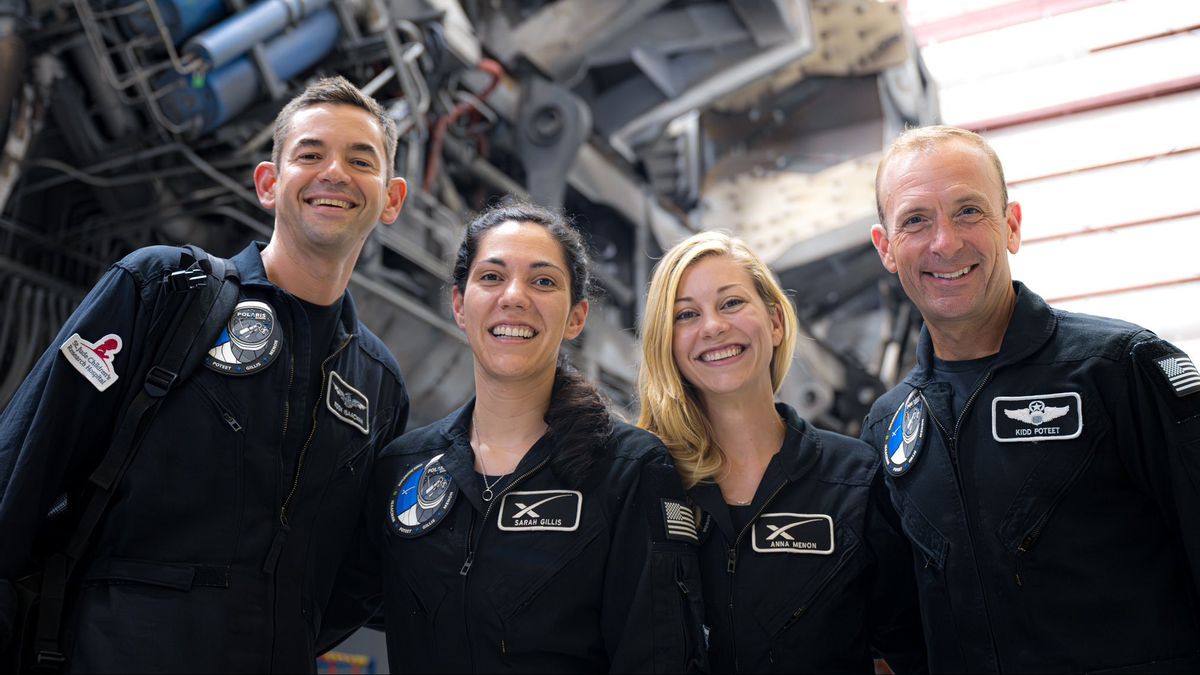JAKARTA - SpaceX, Elon Musk's space company, will conduct a trial of new technologies in the first spacewalk mission carried out by the private sector next week. The mission is considered one of the most risky missions SpaceX has ever undertaken, with the use of sleek spacesuits and cabins without airlocks. This technology is expected to be used on future missions to the moon and Mars.
The mission, named Polaris Dawn, will launch on Tuesday, August 27, carrying four crews consisting of billionaire entrepreneur Jared Isaacman, former military pilot Scott Poteet, as well as two senior SpaceX engineers, Sarah Gillis and Anna Menon. They will launch on a modified Crew Dragon spacecraft so that the cabin door can be opened in a vacuum, allowing astronauts to perform a spacewalk without using an airlock.
After being launched from Earth, the crew will orbit at a maximum altitude of 1,400 km from the Earth's surface, well beyond the orbital altitude of the International Space Station (ISS) which is only 400 km. The mission will last for five days, with the peak being a spacewalk for 20 minutes scheduled for the third day.
Unlike traditional spacewalks performed on the ISS, where only two astronauts come out through the airlock while another crew remains in the pressurized cabin, Polaris Dawn's mission will urge air out of the entire Crew Dragon cabin, so that all crew members will rely fully on their spacesuits to survive. Two crew members will get out of the ride to float in space, while the other two remain in the cabin which has undergone total decompression.
The spacewalk preparation process will begin 45 hours before its implementation, in which the crew will undergo a pre-breathe procedure, namely cabin filling with pure oxygen and nitrogen discharge from the air. This process is important to prevent the formation of nitrogen bubbles in the blood that can cause decompression, or known as "the Bends," which is also often experienced by divers.
The mission will also involve various scientific experiments, including monitoring the condition of the crew's body using ultrasonic devices to detect the formation of nitrogen bubbles. The experiment provides a rare opportunity for researchers to learn how the human body adapts to the extreme space environment, including in lunar or deeper space areas.
With the orbital altitude further than the ISS, the Polaris Dawn crew will also face more intense radiation from Van Allen's radiation belt, which is known to disrupt electronics and has the potential to endanger human health. This trial is important to develop better protective technology for long-term missions in space.
SEE ALSO:
Despite the high risk, SpaceX and crew have prepared various emergency scenarios, such as oxygen leaks or failure to reopen cabin doors after spacewalk. However, they did not specify specific steps to take in case of a problem.
Jared Isaacman, who funded the mission, said that the Polaris Dawn mission was part of a long-term vision to bring humans further into space, with the main targets being the moon and Mars. Meanwhile, former NASA astronautund Reisman said that although the mission was very risky, the crew had been well prepared and prepared to face any challenge that might occur.
With the technology being tested on this mission, SpaceX hopes to make an important breakthrough in space exploration, bringing humanity closer to the dream of future lunar and Martian exploration.
The English, Chinese, Japanese, Arabic, and French versions are automatically generated by the AI. So there may still be inaccuracies in translating, please always see Indonesian as our main language. (system supported by DigitalSiber.id)
















